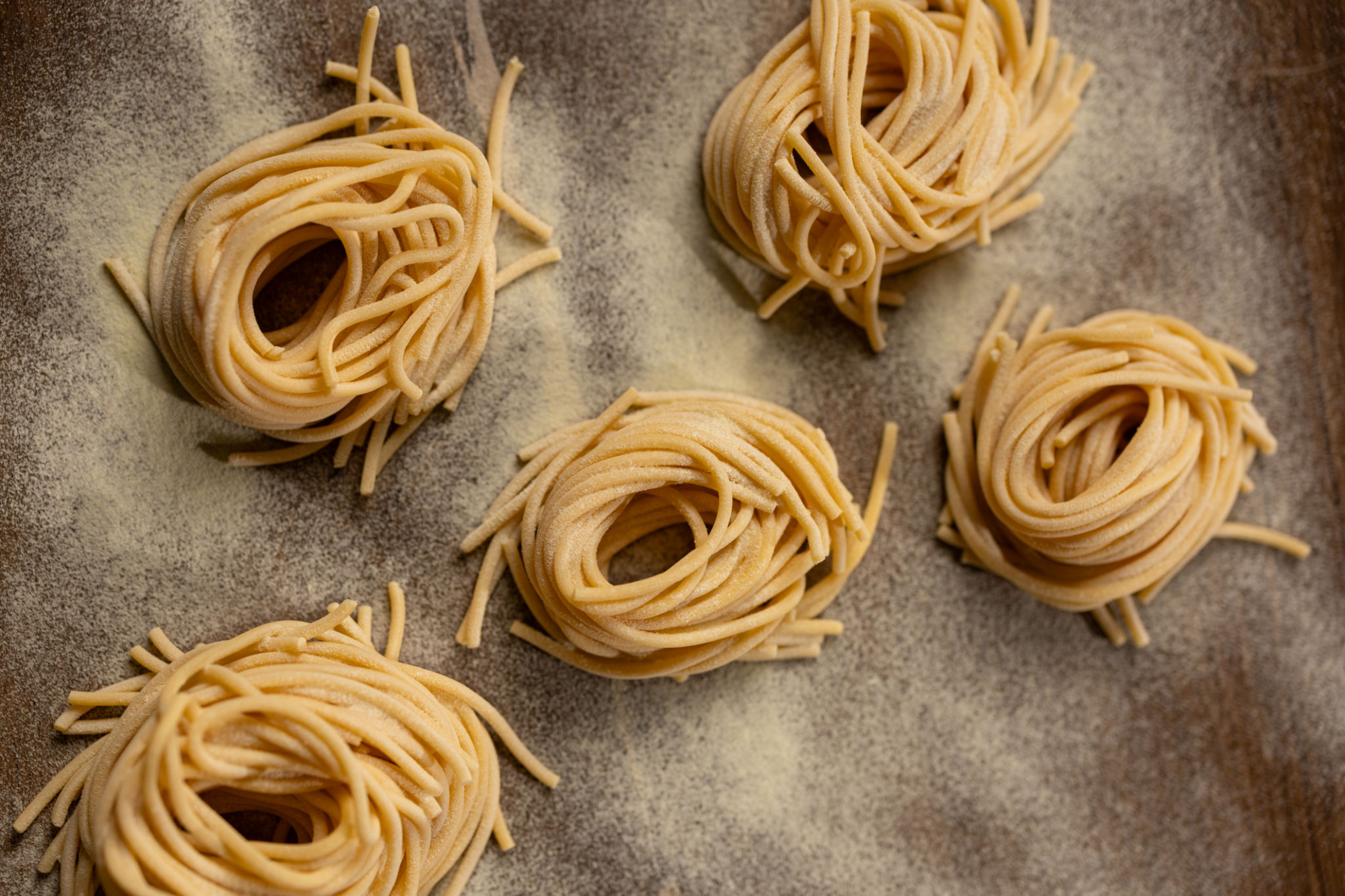PastaCraft's Expert Tips: Perfecting Your Pasta Dough
Start with Quality Ingredients
The foundation of any great pasta dough is the quality of its ingredients. At PastaCraft, we believe that using the freshest and finest ingredients is essential. Opt for high-protein flour, such as semolina or 00 flour, to give your pasta the perfect texture. Fresh eggs are another crucial component, providing richness and color to your dough.

When it comes to water, make sure it's room temperature and free from impurities. If you want to take your pasta to the next level, consider using filtered or bottled water. By prioritizing quality ingredients, you'll set yourself up for success in crafting the perfect pasta dough.
Master the Dough Consistency
Achieving the right consistency in your pasta dough is an art. The dough should be smooth and elastic, not too dry or sticky. To get there, start by combining your flour and eggs in a mound on a clean surface, creating a well in the center for the eggs. Gradually incorporate the flour into the eggs, using a fork to blend them until a dough forms.
Once the dough begins to come together, knead it by hand for about 10 minutes. This process develops the gluten, giving your pasta its chewy texture. If the dough feels too sticky, sprinkle in a little extra flour; if it's too dry, add a touch of water. Remember, practice makes perfect!

Resting the Dough
One of the most overlooked steps in pasta making is allowing the dough to rest. After kneading, wrap your dough in plastic wrap or cover it with a damp cloth, letting it rest for at least 30 minutes at room temperature. This resting period allows the gluten to relax, making the dough easier to roll out and shape.
For those planning ahead, you can also refrigerate the dough for up to 24 hours. Just make sure to let it return to room temperature before rolling it out. This simple step can greatly enhance the texture and workability of your pasta.
Rolling and Cutting Techniques
Rolling out your pasta dough to the right thickness is crucial for even cooking. Whether you're using a pasta machine or a rolling pin, aim for a thickness of about 1-2 millimeters. Remember to dust your work surface and tools with flour to prevent sticking.

Once rolled out, you can cut your pasta into any shape you desire. For classic shapes like fettuccine or tagliatelle, use a sharp knife or a pasta cutter. If you're feeling adventurous, try making ravioli or tortellini. The key is in the uniformity of the cuts, ensuring each piece cooks evenly.
Cooking Your Homemade Pasta
After all your hard work, cooking your pasta is the final step. Bring a large pot of salted water to a boil—remember, the water should taste like the sea. Fresh pasta cooks much faster than dried pasta, typically in just 2-4 minutes, so keep a close eye on it.
Taste test a piece to check for doneness. It should be al dente, with just a slight bite to it. Once cooked, drain the pasta and toss it with your favorite sauce immediately for the best flavor absorption.
Final Thoughts
Making pasta from scratch can seem daunting, but with these expert tips from PastaCraft, you'll be on your way to mastering the art of pasta dough. Remember, each step is an opportunity to infuse love and care into your cooking, resulting in a dish that is more than just a meal—it's an experience.
So roll up your sleeves, gather your ingredients, and enjoy the rewarding process of crafting homemade pasta. Buon appetito!